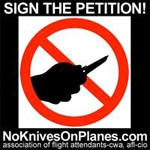By UTU Assistant President Arty Martin
Fatigue is a serious problem for pilots and flight attendants. Flight attendants additionally are without protections afforded under the 1970 Occupational Safety and Health Act (OSHA).
The UTU, working with the Transportation Trades Department of the AFL-CIO, as well as the Air Line Pilots Association and the Association of Flight Attendants, is focused on both of these issues on behalf of UTU’s airline industry members.
Current Federal Aviation Administration (FAA) regulations permit lengthy and irregular shifts across multiple time zones. There are numerous instances of flight crews being given only eight hours of rest between shifts, and that includes travel to and from the airline terminal, which frequently permits as few as three to five hours of actual sleep.
As we know too well in the railroad industry — and as has been documented by sleep scientists at major universities — going to work fatigued is like going to work drunk. The difference is that an intoxicated person sobers up; but a fatigued transportation worker only becomes more fatigued.
Federal regulation and enforcement is needed, and additional help is on the way with the recent confirmation by the Senate of former airline pilot Randy Babbitt to be the federal aviation administrator. Prior to his nomination by President Obama to head the FAA, Babbitt served on an independent review team examining and making recommendations to improve the FAA’s aviation safety system.
In fact, Babbitt said in June that the FAA will propose, by fall, new limits on how many hours airline pilots can fly. Babbitt said the new limits will take into consideration that pilots flying routes with numerous takeoffs and landings experience more fatigue than pilots on longer flights with only one takeoff and landing.
Current FAA regulations permit pilots to be on duty up to 16 hours, with eight hours of scheduled flight time, and airlines can order them back to work with as few as eight hours between shifts.
The February crash of a commuter plane near Buffalo, N.Y., which killed 50 people, gives greater urgency to revising aviation hours-of-service rules because it was determined that the co-pilot of the doomed flight commuted overnight from near Seattle.
Babbitt said, also, that he wants airlines — including commuter carriers — to participate in two safety programs studying airline safety.
As for flight attendants, they are currently under FAA safety-rules jurisdiction rather than OSHA rules. Yet, the FAA has never prescribed or enforced safety and health standards or regulations, which are the core of OSHA regulations. The administration of George H.W. Bush refused to impose specific workplace protections in the aircraft cabin that had been informally agreed to by airlines.
So it is that the UTU, the AFL-CIO Transportation Trades Department, the Air Line Pilots Association and the Association of Flight Attendants are working jointly in support of legislation requiring the FAA to establish regulations to provide a cabin environment free from hazards that can cause physical harm.
It is expected that Babbitt will move to set such rules, although legislation would ensure they could not be tampered with by future administrations less concerned with workplace safety.
 Facing strong opposition from flight attendants and lawmakers, the Transportation Security Administration said Wednesday that it was abandoning a plan to allow passengers to carry small knives on board.
Facing strong opposition from flight attendants and lawmakers, the Transportation Security Administration said Wednesday that it was abandoning a plan to allow passengers to carry small knives on board.